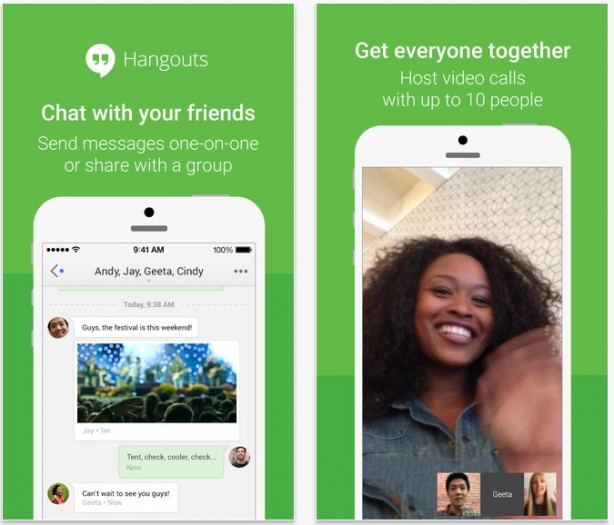アレルギー・ エネルギー・栄養成分. The omissions of specific keys, however, doesn't mean you can't get the same result. One commonly used key that is missing is Caps Lock, but you can still easily turn that on and off. Hi – attempting this multi cam design using iPad Pro, the connection to the BlackMagic recorder, out to thunderbolt into my MacBook Pro (2015). The Mac is not recognizing the thunderbolt or the iPad (Switcher Studio) signal – said another way, there are no other camera options when in Zoom, Skype, GoTo or any other platform.??
This is the eighth part of our Intel Evo vs Apple Silicon series, where we're taking a look at what each side can do better than the other. The MacBook Pro 13, Razer Book 13, Razer Core X, Nvidia GeForce RTX 2080 Ti, Samsung T7 Touch SSD, and CalDigit Thunderbolt 3 dock were provided by Intel. All opinions expressed are a result of our own testing and experience.
It's been a long road, getting from there to here, but it's time to wrap it up. This has been one of the more fun reviews that I've done in a while, just because it's been a journey. Eight articles is a lot, so let's take a look at where we landed on everything.
Hardware
The first thing I took a dive into in this series was hardware, because frankly, it was the easiest. There's not much to test. I just had to plug things in and see if they worked. On top of that, the results are incredibly easy to predict. Intel is better at hardware compatibility.
And why is that? Simple, it's because the entire computing industry is built around Intel right now. Up until last year, macOS has only supported Intel processors, and up until 2017, Windows only supported x86/x64 instruction sets. This is the message that Intel wanted to send out when it sent this hardware to reviewers. Everything works with Intel. There might be some things that are better about Apple Silicon, but the ecosystem isn't there.
The key example for me is that Apple's new MacBook Air and MacBook Pro don't support dual external monitors. And yes, I know I've said it a million times, something that a number of people have joked about in the comments, but it's important. Even if you don't use dual monitors, you might want to during the lifetime of the PC. The problem for Intel is that this will undoubtedly be solved by the next generation.

The other thing is more niche, but there's no support for external GPUs on Apple Silicon. It's cool to have a single-cable solution that can connect an eGPU to a laptop that turns a Windows PC into a gaming rig. With the Razer Book, it was wild to be suggested Ultra settings on Forza Horizon 4.
Other than that, most things worked. Intel warned me that Xbox controllers wouldn't work, and I didn't find that to be true. It's only the Xbox Series X|S controller that currently doesn't work, and that's getting fixed. Intel also sent me a Samsung Touch T7 SSD, and that worked fine too.
Probably the other key thing that won't work is biometrics, such as with the Logitech Brio webcam. You can't use the IR camera to log into the Mac. You have to use Touch ID. Naturally, all of this stuff works on Windows.
And of course, Windows has a broader array of hardware to choose from, just when it comes to the PC selection. There are beautiful and unique designs like the HP Spectre x360, touchscreens, convertibles with pen support, tablets, and more.
Software
Intel does better with software than Apple Silicon does for the exact same reason. All desktop software is built for Intel. Some of it has been recompiled for ARM on Windows and Mac, but literally all of it runs natively on Intel.
So the real question is, what are you missing out on with Apple Silicon? I'd say the biggest one is Boot Camp, or a decent Windows experience. Before you discount this idea, keep in mind that Apple even used to boast that its PCs could run Windows.
The only way to run Windows now is through virtualization in Parallels. And it's problematic. Most of Microsoft's built-in apps are 32-bit ARM apps, and the Apple M1 doesn't support 32-bit ARM apps. After all, it's been ages since there's been a 32-bit ARM app in Apple's ecosystem. You can't open the Microsoft Store, Photos, and so on.
The Apple Silicon Mac can run Intel apps using Apple's Rosetta 2, and it usually ends up working pretty well. A lot of these apps seem to take super-long to launch, but at least they work, so you're not actually losing them.
The problem of native apps is a short-term one though. This can only get better over time. Adobe has a bunch of native ARM64 apps in beta, with more on the way. You can also choose to run the Intel versions of Adobe apps side-by-side with the betas; for example, the betas of Premiere Pro and Media Encoder don't support MP3 files, so unless your audio track is WAV, you need to convert it. You can use the Intel app for that.
Performance

It's easy to look at hardware and software ecosystems that were literally built for a world where Intel wasn't just the dominant PC chip vendor, but it was the only one. After all, this is precisely why Intel sent these products out, to highlight its strengths, which are completely legitimate.
Now, let's talk about performance of the chip itself. First of all, like I said in my MacBook Pro review, they feel the same in day-to-day usage. For productivity work, both Intel's 11th-gen processors and Apple M1 feel the same. Now that that's out of the way, we can go beyond anecdotal evidence like that.
| Apple M1 native | 3:13 |
|---|---|
| Apple M1 Rosetta | 3:09 |
| Razer Book 13 | 4:00 |
| Lenovo ThinkPad P17 | 1:48 |
Video renders faster on the M1 than it does with the Core i7-1165G7 that was in the Razer Book. I took a two minute 13 second 4K 60fps video, imported it into Premiere Pro, and exported it, getting the results in the table to the right. It's clear that Apple Silicon smokes Intel's Iris Xe graphics, at least as far as that's concerned. I also added the ThinkPad P17, which is clearly way out of the MacBook Pro's class, but I wanted to show what's possible with a top-end Nvidia Quadro RTX GPU. I feel like Apple Silicon is being reported as a home run, and that it punches well above its weight class. That's not true. If anything, it wins in its weight class.
There are also things that are faster on Intel Evo. App launching is faster in almost every case, and opening documents tends to be a lot faster. The problem is that I don't have rendering times for stuff like that, like I do for video rendering. There are parts of the UI where Apple Silicon just feels plain sluggish.
Apple wins on benchmarks too though. I was only able to use Geekbench and Cinebench, which only test the CPU. Sadly, that tells a very one-sided part of the story; however, if you're interested in graphics performance, you can go by the video rendering times.
| MacBook Pro 13 M1, macOS | MacBook Pro 13 M1, Windows 10 (Parallels) | Surface Pro X SQ2 | Razer Book 13 Core i7-1165G7 | ThinkPad X1 Nano Core i7-1160G7 | |
|---|---|---|---|---|---|
| Geekbench | 1,720 / 7,668 | 1,398 / 2,697 | 794 / 3,036 | 1,425 / 4,143 | 1,346 / 4,891 |
| Cinebench | 1,495 / 7,771 | 1,210 / 3,711 | 1,296 / 4,052 |

The MacBook Pro does well here, but it does particularly well in multi-core performance. Depending on your work flow, this can make a big difference.
Conclusion

Intel wins when it comes to the hardware and software ecosystems, but Apple wins in performance, so what does this all add up to? Personally, I'd say just wait a year, or even two if you can. All of the issues around Apple Silicon right now are short-term problems. Apple Silicon will support multiple external monitors at some point, and developers will compile their apps to run natively, boosting things like startup time.
The M1-powered MacBook Pro is good, really good. But throughout the time I was using it, my main thought was about how much I liked it, and how much of a shame that is because it has so many deal-breakers built into it.
Right now, Intel still wins, and it's not because of performance. It's because Apple can't check all of the boxes necessary, even if it checks the ones that are right for certain users.
It's a hell of a start from Apple though, and the Cupertino firm should feel proud of what it's accomplished here. Now, it's up to Intel. Most of my complaints about Apple Silicon will be solved over one generation, maybe two. Intel has to use that time to figure out how to compete in terms of performance.
Google Hangouts For Macbook Pro
Check out the rest of the series:
